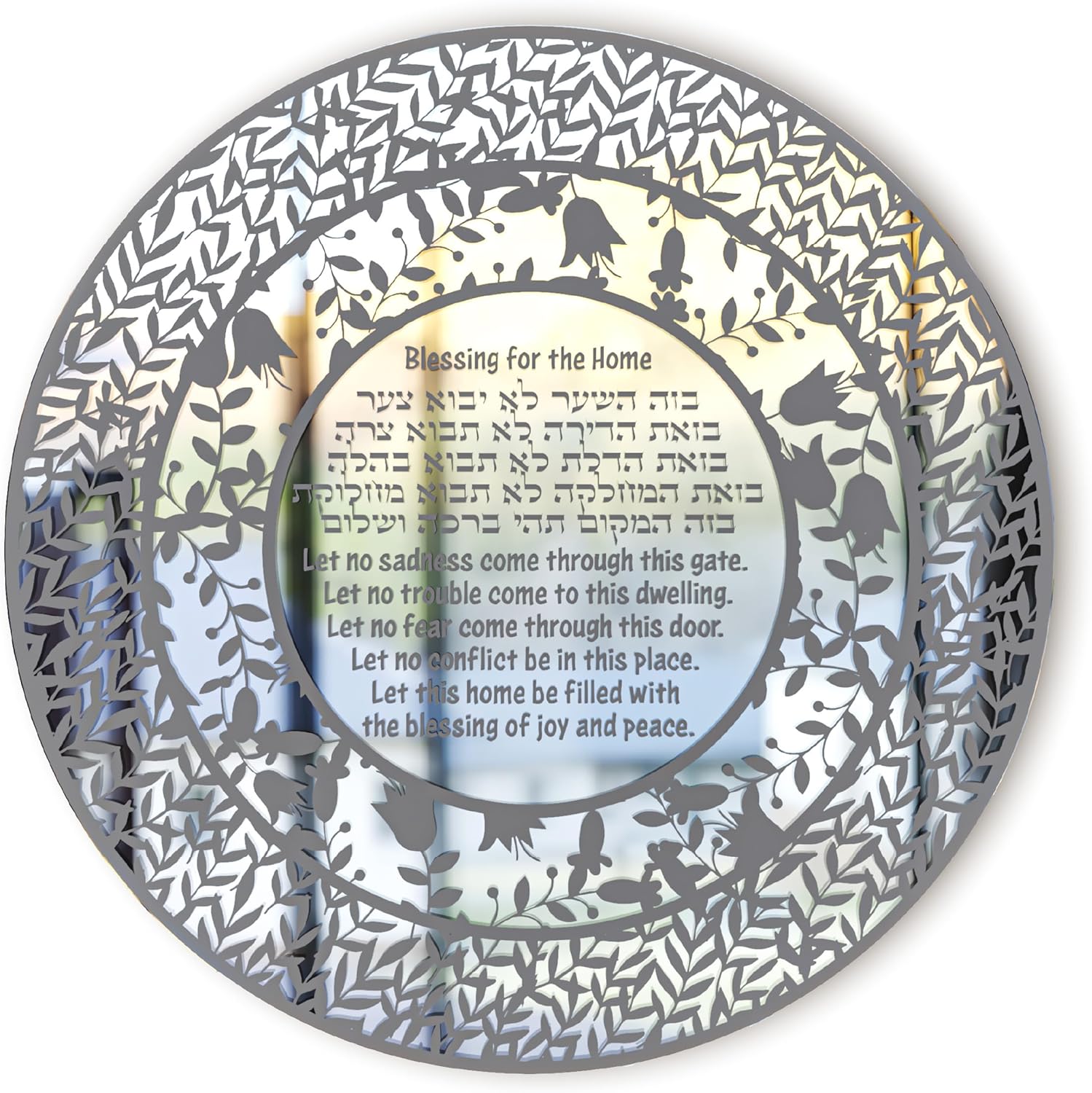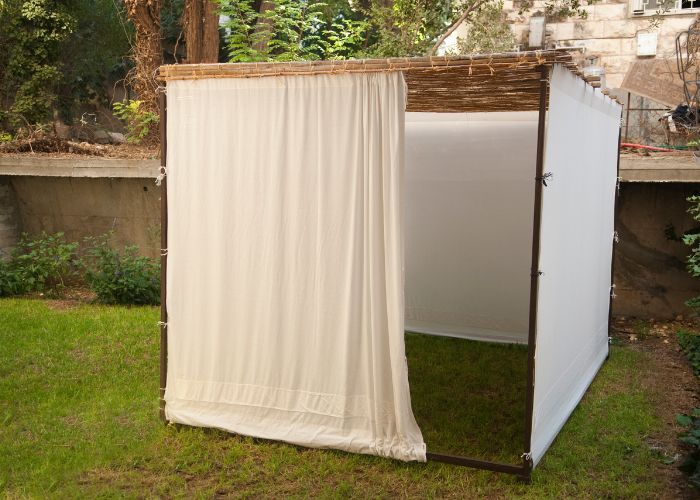Sukkot, also known as the Feast of Booths, is a major Jewish holiday celebrated five days after Yom Kippur. It lasts for seven days and commemorates the Israelites’ 40-year journey through the desert after their exodus from Egypt. During this time, the Israelites lived in temporary shelters, relying on God’s protection and provision. The 8th day of Sukkot is known as Shemini Atzeret, which translates to “the Eighth [Day] of Assembly.” Though it follows the seven days of Sukkot, it is considered a separate holiday with its own unique significance.

Jewish Home Blessing Handmade
Today, Sukkot is marked by the building of a Sukkah (a temporary booth) and by the performance of specific rituals involving the Arba’at Haminim, or the Four Species.


What is Sukkot?
Sukkot is a time of celebration, family gathering, and reflection on the Israelites’ time in the desert. Traditionally, Sukkot is a pilgrimage festival , one of the three times in the Jewish year when ancient Israelites would journey to Jerusalem to present offerings at the Temple.
The holiday is also closely tied to the autumn harvest. In ancient Israel, Sukkot was a time to give thanks for the year’s crops, and the theme of gratitude continues to be an integral part of the festival.
The Biblical Origins of Sukkot
The roots of Sukkot are found in the Torah, specifically in the Book of Leviticus (23:42-43), where God commands the Israelites to dwell in booths for seven days. The booths, or Sukkot, are meant to remind them of the temporary shelters they lived in during their 40 years in the desert.
These booths are fragile, emphasizing the Israelites’ vulnerability and dependence on god’s protection.
The Sukkah Rules

One of the central customs of Sukkot is building and dwelling in a Sukkah, a temporary hut or booth. The Sukkah must have at least three walls and a roof made of natural materials like branches or leaves, which are loose enough to let in sunlight during the day and allow the stars to be visible at night.
The Sukkah serves as a reminder of the transient nature of life and the protection that comes from faith. Jewish families eat their meals inside the Sukkah, and some even sleep in it, fulfilling the commandment to “dwell” in the temporary shelter for the duration of the holiday.
The Arba’at Haminim: The Four Species of Sukkot

One of the most distinctive rituals of Sukkot involves the Arba’at Haminim—the Four Species—which are shaken in six directions during the holiday prayers to symbolize God’s omnipresence. These four plant species each carry meanings related to body parts as well as types of Jews.
Body parts
- Lulav (Palm Branch): Representing the spine, the Lulav is a tall, straight palm branch.
- Etrog (Citron): This yellow, lemon-like fruit is held in the left hand and symbolizes the heart, which is at the core of our emotions and desires.
- Hadas (Myrtle Branch): The Myrtle’s small, oval leaves resemble eyes, symbolizing sight and wisdom.
- Aravah (Willow Branch): The Willow’s long, narrow leaves resemble lips, which symbolize the power of speech and prayer.
Types of Jews
- Etrog – has good taste and smell, symbolizing those with both Torah knowledge and good deeds
- Lulav – has taste but no smell, symbolizing those who study Torah but lack good deeds
- Hadass – has smell but no taste, symbolizing those with good deeds but no Torah study
- Aravah – has neither taste nor smell, symbolizing those lacking both Torah and good deeds
These Four Species are bound together in a bundle (except for the Etrog, which is held separately) and waved in six directions—north, south, east, west, up, and down—during Sukkot prayers. This act symbolizes God’s presence in every corner of the world and His control over all aspects of life.
How Sukkot is Celebrated Today
Sukkot celebrations today still revolve around family gatherings, meals in the Sukkah, and the waving of the Arba’at Haminim. In many Jewish communities, families build their own Sukkah in their backyard or on their balcony, decorating it with fruits, lights, and artwork.
Sukkot is also a time of hospitality. It is customary to invite family, friends, and even strangers into the Sukkah to share meals. This act of welcoming guests, or Ushpizin,אושפיזין is considered a mitzvah (good deed) and reflects the spirit of generosity and community that is central to the holiday.
FAQ
The Ushpizin mitzvah refers to the custom during Sukkot of symbolically inviting seven exalted biblical guests, known as the Ushpizin, into the Sukkah (temporary shelter) for spiritual inspiration and blessings. The word Ushpizin is Aramaic for “guests.”
The Seven Ushpizin
Each night of Sukkot, a different one of these seven spiritual guests is welcomed into the Sukkah. The seven Ushpizin are:
Abraham
Isaac
Jacob
Aaron
Joseph
David
The Ushpizin mitzvah emphasizes hospitality as a core value of Sukkot, reflecting the generosity and openness that characterize the holiday. Although the guests are spiritual figures, the tradition encourages the hosting of actual guests, especially those in need, in the Sukkah for meals, reinforcing the themes of community, kindness, and inclusion.
Sukkot commemorates the 40-year period when the Israelites wandered in the desert after leaving Egypt. During this time, they dwelled in temporary shelters or booths, which is recreated by building and living in sukkot (singular: sukkah) during the holiday.
